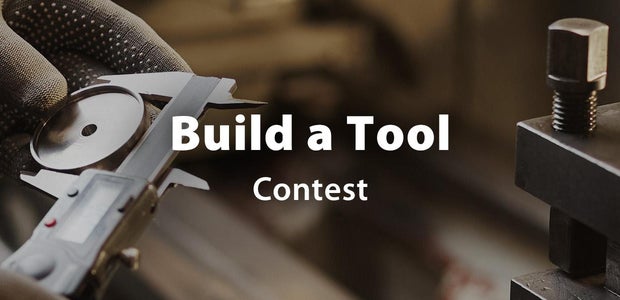Introduction: Homemade Wooden Clamp
In this Instructable I want to show you how to make a cheap and effective wooden clamp. I have used wood chips and other materials that I already had in my workshop. As at first sight it may seem weak, this clamp has plenty of clamping pressure. It has a Norwegian style, as these type of clamping tool was traditionally used for Norwegian boat construction
If you like the video please Subscribe to my Youtube Channel
I would also apologise for my English as a non-native English speaker some terms are very difficult for me.
Forward, inscrutable!!
Step 1: Materials and Tools
Materials
- Elondo (African wood) & haya wood (Fagus grandifolia)
- Spring ( 4cm x 0.10cm)
- Hinge
- Metal sheet (8cm x 1cm x 0.2cm)
- Screws (3,5cm x 0.4cm)
- Leather
- Aluminum tubes (2,5cm x 0,6cm)
Tools
- Fret saw (4cm)
- Electric drill and hand drill
- Bit drill ( 6mm&10mm)
- Rasp half round
- Steel Rasp File
- Block Plane Stanley
- Scraper
- Sanding Paper grit 250
- Screwdriver
- Wooden clamp
- Chisel
- Engineers Square
- Soft-Faced Hammers
- Pencil
- Saw metal
- Hole saw
Step 2: Cutting the Main Pieces
I start cutting the pieces that I previously drew by hand and later I glue it on the wood. For cutting I use a fret sawl and for the rounded zone I use a hole saw.
I use a rasp half round and a block plane to flatten the irregular surfaces and for the final touch a sanding paper grit 250.
Here is thedrawing of the figure.Step 3: Joining Pieces
For the join of the both pieces I use a hinge the most similar to the thickness of the wood and before screwing I drill the holes with a hand drill that afterwards I tightly screw.
As the hinge I used is wider I polish the sides to adjust it to the maximum.
Step 4: Clamping System
I use other type of wood for making a color-contrasting for the clamping system.
With the same hole saw I used previously I make a circle and after I use a homemade but very effective technique to polish it: it is about using a plane wood as a lathe with the help of a drill as you can see in the photos.
Then we drill the wood in order to insert the wooden stick that we will use to tight the clamp. For this I use a bit drill of the same size of the wooden stick and finally we cover with another little stick the hole that remains in the center of the circle.
Step 5: Spring
For making the clamp return to the open position I settle one spring making 2 holes where this is accommodate without the need of any supporting system.
Step 6: Metal Sheets and Aluminum Tubes
Now we have to mark the points for the 2 aluminum tubes and we drill it with a bit drill of the same size (6mm) and then we introduce them in the holes. Afterward, we cut 2 metal sheets (8x1x0,2cm) and we drill one hole in each end with the same size of the tube diameter (6mm).
I use a steal rasp file and sanding paper for a better shape and softness of the metal sheets.
Step 7: Leather Friction
I screw a piece of leather on the curve area for making strong friction against the wood as braking mode.
Step 8: Final Assembling
After a coat of oil onto all the pieces we start with the final assembling!
For this the images almost speak for themselves!













